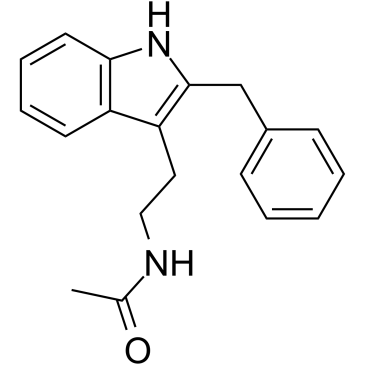Synergistic effect of the L-tryptophan and kynurenic acid with dipyrone or paracetamol in mice.
Nayrton Flávio Moura Rocha, Emiliano Ricardo Vasconcelos Rios, Alyne Mara Rodrigues Carvalho, Leonardo Vasconcelos Freire, Marília Leite Dias, Marta Maria de França Fonteles, Francisca Cléa Florenço de Sousa
Index: Chem. Biol. Interact. 205(2) , 148-56, (2013)
Full Text: HTML
Abstract
Our great interest in this work was study the synergism between l-tryptophan and dipyrone or paracetamol as well as the interaction of kynurenic acid (l-tryptophan metabolite) and these analgesics agents utilizing a robust methodology.We performed the writhing test induced by acetic acid in mice to evaluate the antinociceptive effect of the treatments isolated and combined (p.o. and i.p.). Dose-response curves were constructed and the values of ED50 for treatment alone and combined were statistically compared. In addition, isobolographic analysis was performed and the experimental values were compared with the theoretical values for simple additive effect.The combined treatment with l-tryptophan and dipyrone or paracetamol reduced significantly the ED50 of these analgesics when compared to the isolated treatments. l-tryptophan alone has no antinociceptive effect. l-Tryptophan increases the central amount of 5-HT and the synergism with dipyrone is antagonized by the 5-HT depletion. The kyna has an antinociceptive dose-related effect and a synergistic interaction with dipyrone and paracetamol verified by isobolographic analyses and confirmed by experimental values of ED50 of combined treatments were statistically lower than theoretical calculated values for simple additive effect. Melatonin antagonist receptor attenuates the antinociceptive synergism between l-tryptophan and dipyrone.Our results demonstrate that the increased 5-HT amount on the central nervous system is not per se capable to induce antinociception. The l-tryptophan interacts synergistically with dipyrone and paracetamol both orally and by i.p. route. This effect is dependent on the biotransformation of l-tryptophan to 5-HT and involves kynurenic acid and melatonin receptors.Copyright © 2013 Elsevier Ireland Ltd. All rights reserved.
Related Compounds
| Structure | Name/CAS No. | Molecular Formula | Articles |
|---|---|---|---|
 |
Kynurenic acid
CAS:492-27-3 |
C10H7NO3 | |
 |
Luzindole
CAS:117946-91-5 |
C19H20N2O |
|
Lipocalin 2 modulates the cellular response to amyloid beta.
2014-10-01 [Cell Death Differ. 21(10) , 1588-99, (2014)] |
|
From Memory Impairment to Posttraumatic Stress Disorder-Like...
2015-12-02 [J. Neurosci. 35 , 15903-15, (2015)] |
|
Metabolite profile analysis reveals association of vitamin B...
2015-01-01 [J. Nutr. 145(1) , 87-95, (2015)] |
|
Vitamin B1 deficiency inhibits the increased conversion of t...
2015-01-01 [Biosci. Biotechnol. Biochem. 79(1) , 103-8, (2015)] |
|
Time-dependent effects of L-tryptophan administration on uri...
2014-01-01 [J. Nutr. Sci. Vitaminol. 60(4) , 255-60, (2014)] |